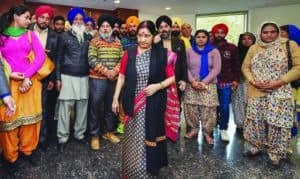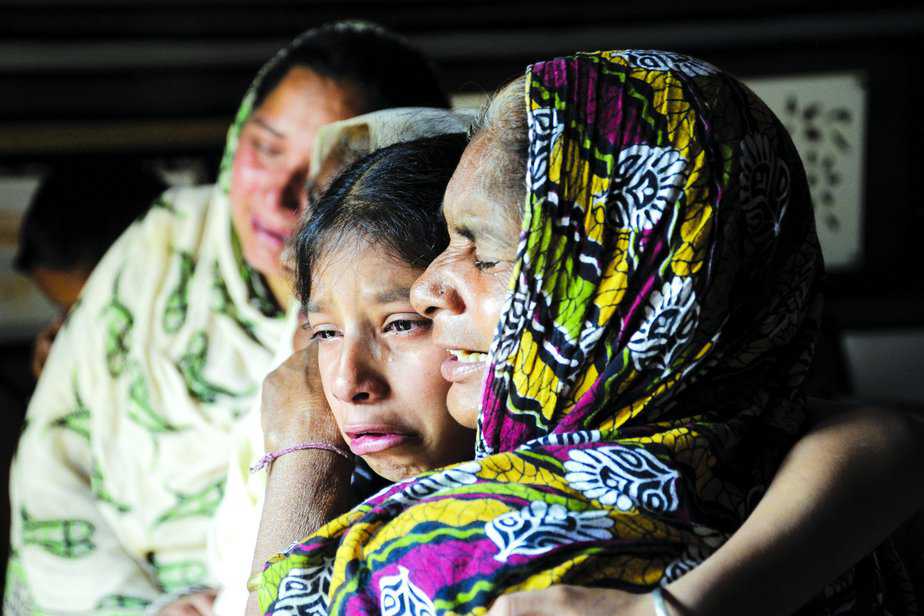It’s time for a reappraisal of the MEA’s public communication apparatus
On July 10 last year, Iraqi Prime Minister Haider al-Abadi declared that Mosul, the country’s second largest city, has been recaptured from ISIS. In a way, it was a moment of Mosul’s liberation from the Islamic State. That, however, was too late for 39 Indian citizens, employed mostly as construction workers, who were kidnapped by the terrorist group in June 2014.
They were dead much before Mosul’s military liberation—a fact the external affairs minister, Sushma Swaraj, officially confirmed in both Houses of Parliament yesterday (March 20).
According to the government, the confirmation was a result of a tenacious search following information received from locals in Badoosh that ISIS had buried a few bodies in a mound. Deep penetration radars were used to scan the mass grave inside the mound, bodies were exhumed following a request by Indian authorities and identified using DNA testing.
Besides the DNA verification, long hair, karas (metal bracelets), IDs and non- Iraqi shoes were initial clues for believing the mass grave was of the missing Indians—most of them from Punjab and the rest from Himachal Pradesh, West Bengal and Bihar. The Ministry of External Affairs acknowledged the role of Martyrs Foundation, an Iraqi governmental body, and its expertise in conducting meticulous DNA testing.
Harjit Masih, the lone survivor who managed to escape ISIS captors, had been claiming for the last three years that all kidnapped Indians had been murdered. The Indian government didn’t go by his claims of being an eyewitness because there was no evidence to back what he was saying.
Swaraj also pointed out that the government came to know that Masih had escaped in the very beginning, faking his identity as a Muslim from Bangladesh. Her ministry also found Masih’s claims of being a witness to the massacre was ‘a cock-and-bull story’.

The fact that it took almost four years to confirm the deaths can be attributed to many factors. What, however, was a bit unusual was the response of the Opposition parties as political diatribe over the government’s statement confirming the deaths took centre-stage in New Delhi. The Congress was joined by other political parties in slamming the government for what they called “misleading” the country about the killings and also for not informing the families of the victims before making a confirmatory statement about the deaths in Parliament.
Congress leaders such as Ghulam Nabi Azad and Shashi Tharoor, National Conference leader Omar Abdullah and CPI(M) leader Mohammad Salim led the initial attack on the government for “encouraging” false hopes of survival and then for insensitivity in denying the families first access to the news about the loss of their close ones.
Swaraj defended the government’s decision by citing imperatives of Parliamentary procedures and why Parliament needs to be informed first when in session. What, however, still remains unanswered on this count is the fact that there have been occasions in the past when different governments have made such decisions discretionary rather than mandatory in practice.
More significant was her reasoning for the delay in ascertaining the fate of the missing 39. Her assertion was centred on the argument that facts had to be verified and strong evidence needed be pieced together before the government could arrive at a conclusion. Unlike Masih, Swaraj argued, the government wasn’t an individual and couldn’t risk concluding the search hurriedly.
The delay, for all practical purposes, was attributed to a painstaking process of scientific corroboration of available clues. It’s difficult to argue against the public mandate of meticulous verification that a government carries. However, the government’s ill-informed optimism in stating the missing victims to be “alive” and raising false hopes of their rescue can’t escape critical scrutiny at the same time.
In fact, it could serve as a learning curve for public communication aspect of our crisis-management diplomacy, particularly in context of its implications for afflicted families. In the last four years, was the government misled by its “sources” in strife- torn Iraq? Till the defeat of ISIS in Mosul, that possibility couldn’t be ruled out.
In hostile ISIS-controlled Mosul, intelligence gathering about missing Indians couldn’t be expected to go anywhere beyond sketchy, flawed or even a non-starter. That situation only changed in July last year when Iraqi authorities were more forthcoming and even co-operative in sharing the relevant details and assisting in the search. It’s possible that government read too much, and even communicated bits of it, into whatever clues it got even in the period when ISIS was controlling Mosul.
There can always be speculation about the immediate trigger behind Swaraj’s statement in Parliament. The government’s expected response would be to play down any idea of a trigger except the findings reaching their logical conclusion. However, contrary to any perception about national politics deciding the timing of such a statement, it’s plausible that it was promoted by a need to pre-empt any such declaration by Iraq’s Martyr Foundation. That would have been an embarrassment for South Block.
Any suggestion of political reasoning behind revealing or concealing information regarding the fate of the victims seems like an unusual creeping of partisan cynicism into the hitherto untouched terrain of foreign policy discourse, particularly crisis response on foreign soil.
Though diplomacy can’t be detached from the policy framework of a regime, India’s foreign policy discourse and decision making on crucial issues have a general character of continuity and consensus cutting across political lines. The political slugfest over such incidents seems to be a new subtext to the acrimonious political battles in which issues get reduced to opportunities for diatribe.
What, instead, the tragic end of the 39 workers should have alerted us to is the barbaric face of jihadist forces like ISIS and the violent terror that they are capable of unleashing on Indians working abroad. It’s this realisation and the urgency to have proper response and security mechanisms in place that went missing amid the din of bytes and the deluge of tweets attacking or defending the government. It appears that the public discourse seems resigned to the reality of Islamist terror as fait accompli.
Even such misdirected priority would serve a purpose if the Mosul massacre paves the way for a reappraisal of the MEA’s public communication apparatus, more so when it is dealing with crisis response overseas.





